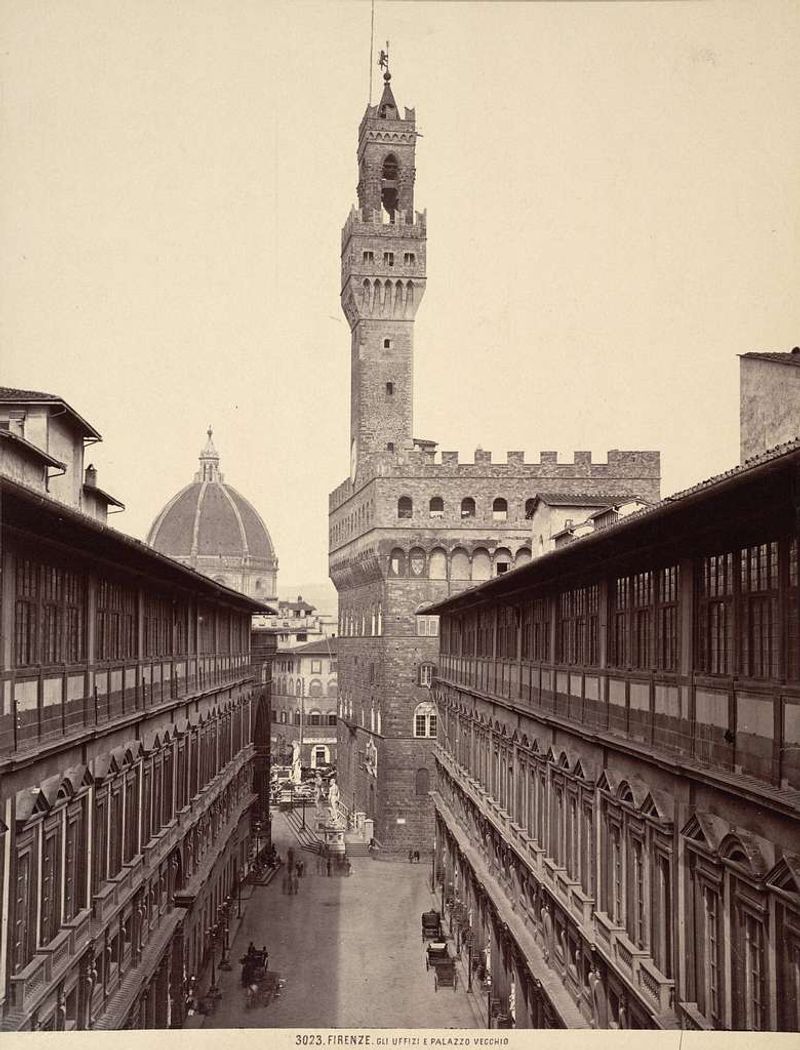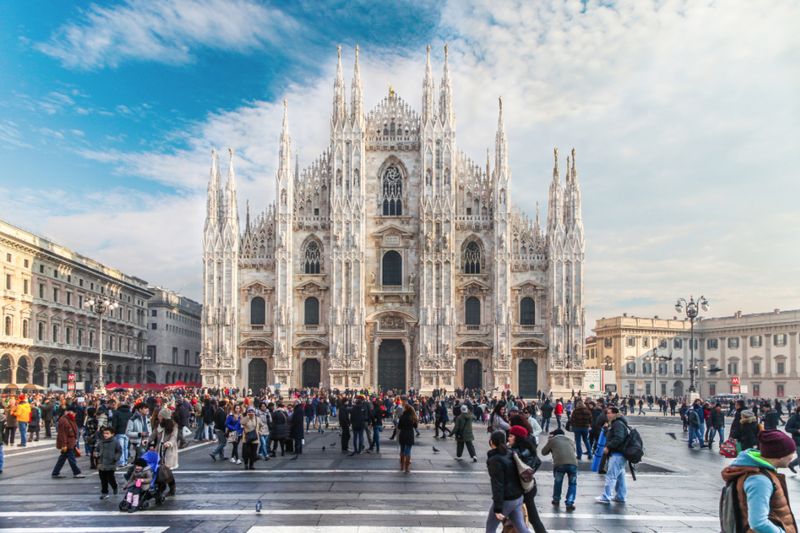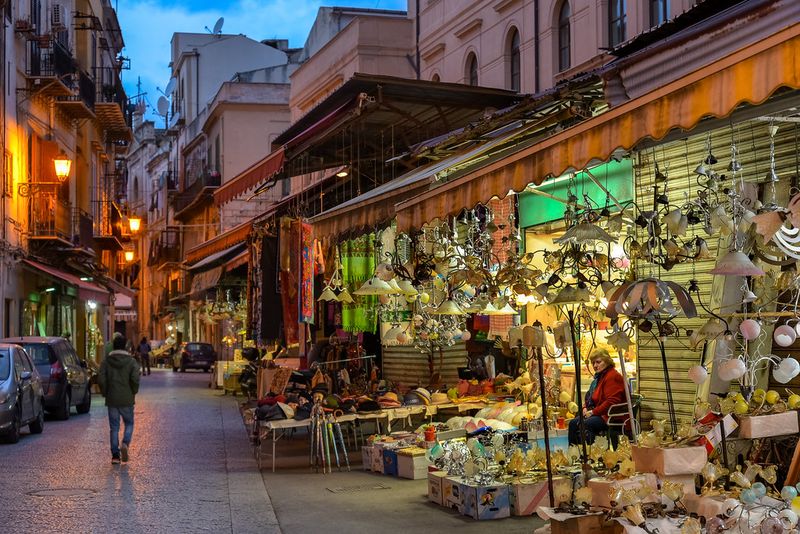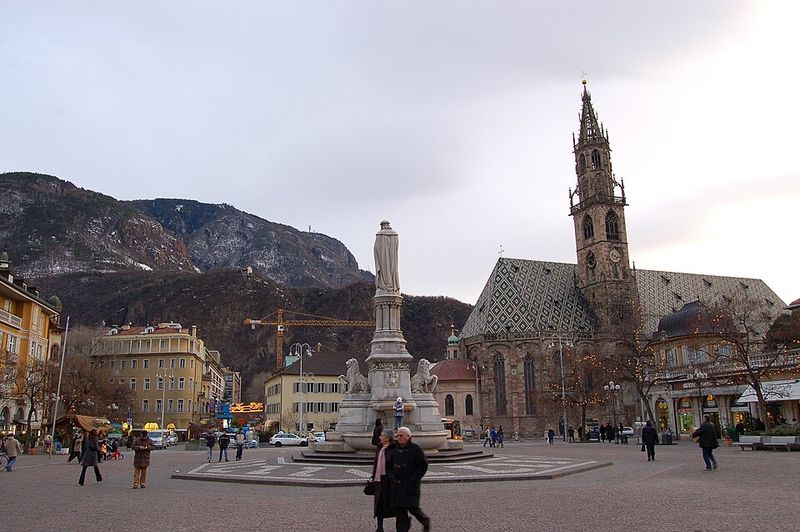Italy offers some of the world’s most enchanting cities where ancient cobblestone streets lead to Renaissance masterpieces, bustling food markets, and hidden trattorias serving generations-old recipes. For travelers who love exploring on foot, these Italian destinations combine compact historic centers with incredible culinary scenes and centuries of fascinating history. Whether you’re wandering past Roman ruins or stopping for gelato in a sun-drenched piazza, these walkable cities let you experience Italy’s magic at your own pace.
Florence (Firenze)
Florence tops nearly every walkability list, and once you arrive, you’ll understand why. The entire historic center feels like an open-air museum where Renaissance masterpieces hide around every corner.
Major landmarks cluster together beautifully—the magnificent Duomo with Brunelleschi’s dome, the medieval Ponte Vecchio bridge lined with jewelry shops, and the world-famous Uffizi Gallery all sit within minutes of each other. You can easily explore the city’s artistic treasures without ever needing transportation.
Food lovers will swoon over thick-cut bistecca alla fiorentina and hearty pappardelle draped with wild boar ragù. Artisan gelato shops dot the cobbled streets, tempting you at every turn. The narrow medieval alleys and pedestrian-friendly piazzas mean more time enjoying Renaissance ambience and less time figuring out transit routes.
Rome
Walking through Rome feels like stepping directly into a history book that spans millennia. Recently crowned the most walkable city in the world by traveler surveys, the Eternal City rewards every footstep with jaw-dropping discoveries.
The Colosseum, Roman Forum, Pantheon, and charming Piazza Navona all lie within comfortable walking distance. Many historic zones remain closed to cars, creating peaceful pathways through centuries of architecture.
Roman cuisine shines in neighborhood trattorias where carbonara and cacio e pepe are prepared with reverence for tradition. Head to Trastevere’s lively streets for an evening spritz and people-watching. With such dense concentrations of iconic sights, Rome naturally invites relaxed, exploratory wandering rather than rushed transit connections. Every street corner reveals another fountain, church, or hidden courtyard worth pausing to admire.
Milan
Milan surprises many travelers with how effortlessly it combines fashion-forward energy with deep historical roots. Studies consistently rank Milan among the world’s most walkable cities thanks to its compact layout and extensive pedestrian zones.
The breathtaking Duomo di Milano rooftop offers panoramic views, while the artisan-filled Brera district invites browsing through galleries and boutiques. Evening strolls along the canal-lined Navigli neighborhood reveal a different side of the city entirely.
Culinary highlights include golden risotto alla milanese perfumed with saffron and crispy cotoletta alla milanese. Grab gelato while window-shopping through the stunning Galleria Vittorio Emanuele II. Milan’s dense central grid means major cultural attractions, world-class shopping, and exceptional restaurants all lie within comfortable walking range—perfect for travelers who want culture and cuisine in equal measure.
Verona
Shakespeare made Verona famous, but this northern Italian gem offers far more than Romeo and Juliet’s balcony. The ancient Verona Arena—a remarkably preserved Roman amphitheater—still hosts spectacular opera performances under the stars.
Verona’s compact old town clusters tightly around Piazza delle Erbe, where market stalls have operated for centuries. Pedestrian-only zones encourage leisurely exploration through layers of architectural history.
Wine enthusiasts will appreciate risotto all’amarone, made with the region’s famous Amarone wine, creating deep, complex flavors. Local tortellini served in brodo (soup) provides comfort on cooler days, paired perfectly with Valpolicella reds. The entire historic core invites unhurried walks where you can appreciate centuries of culture without constantly checking transit schedules. Every piazza offers another cafe where you can rest, refuel, and watch Veronese life unfold.
Bologna
Bologna earned its nickname “La Grassa” (The Fat One) for good reason—this city takes food seriously. Famous porticoes stretch across Bologna, creating covered walkways that shelter strollers even during light rain, making it wonderfully walkable year-round.
The iconic Two Towers (Le Due Torri) lean dramatically over medieval squares where university students and locals mingle. Vibrant markets and historic buildings pack into a dense, flat historic grid.
For food lovers, Bologna represents paradise: authentic tagliatelle al ragù (the real Bolognese), delicate tortellini, thick slices of mortadella, and exceptional regional wines. Food markets and cozy cafés appear every few blocks, tempting you to stop and taste. The flat terrain means easy walking without exhausting climbs, letting you focus energy on exploring countless food shops, trattorias, and historic landmarks all within comfortable range.
Genoa
Genoa’s maritime heritage pulses through its labyrinthine “caruggi”—narrow alleyways that wind through the old town like a medieval maze. Once a powerful maritime republic, Genoa rewards curious wanderers with unexpected discoveries around every corner.
The majestic Renaissance palazzi lining Via Garibaldi showcase the wealth of merchant princes, while the historic port area buzzes with modern life. Pedestrian-friendly harbor walkways connect attractions seamlessly.
Genoa gave the world pesto Genovese, and tasting it here—made with local basil, pine nuts, and olive oil—is revelatory. Focaccia alla Genovese comes pillowy-soft and olive-oil-rich, while farinata (chickpea pancake) offers satisfying street food. The compact old town keeps everything close together, so you spend less time commuting and more time uncovering hidden churches, artisan workshops, and harbor-view trattorias that blend land and sea flavors born from centuries of seafaring tradition.
Naples
Naples explodes with energy, color, and flavors unlike anywhere else in Italy. The UNESCO-listed historic center thrums with life—laundry flutters between centuries-old buildings while Vespas zip through narrow lanes and vendors call out from market stalls.
Walking the seafront promenade offers stunning bay views, while old churches hide baroque treasures behind unassuming facades. The dense urban fabric keeps major sights close together.
Widely celebrated as pizza’s birthplace, Naples serves the definitive pizza margherita in countless neighborhood pizzerias. Street food reigns supreme here: flaky sfogliatella pastries, deep-fried seafood cones, and espresso knocked back at busy bars. The pedestrian-friendly waterfront and compact medieval streets make Naples perfectly explorable on foot, though be prepared for the city’s famously lively, sometimes chaotic energy that makes every walk an adventure rather than a simple stroll.
Palermo
Palermo wears its multicultural history proudly, blending Norman, Arab, Byzantine, and Baroque influences into something entirely unique. Sicily’s capital offers dramatic architecture and some of Italy’s most exciting street food, all within a walkable historic grid.
The old town reveals treasures at every turn—ornate churches with golden mosaics, bustling markets overflowing with seafood and citrus, and grand piazzas perfect for lingering. Most attractions cluster conveniently in the historic center.
Street food culture thrives here like nowhere else: golden arancini (stuffed rice balls), crispy panelle (chickpea fritters), sweet cannoli filled to order, and incredibly fresh Mediterranean seafood. Markets like Ballarò and Vucciria offer sensory overload in the best way. You can wander between monuments and markets in one coherent area, experiencing layers of history and cuisine that reflect centuries of cultural exchange and Sicilian ingenuity.
Lucca
Lucca stands out among Tuscan cities for its remarkably intact Renaissance walls that encircle the entire historic center. Unlike defensive walls elsewhere, Lucca’s ramparts transformed into a tree-lined park where locals jog, cycle, and stroll with panoramic views over terracotta rooftops.
Inside the walls, car-free streets wind past medieval towers, Romanesque churches, and the unique oval-shaped Piazza Anfiteatro built on ancient Roman amphitheater foundations. Everything feels intimate and accessible on foot.
Tuscan cuisine shines here with local specialties like tordelli lucchese (meat-filled pasta) and buccellato (sweet anise bread). Small family-run trattorias serve simple, perfectly executed dishes using regional ingredients. The compact size means you can walk the entire wall circuit in about an hour, then explore the atmospheric interior streets at leisure, discovering hidden gardens, artisan workshops, and quiet corners that larger Tuscan cities can’t match.
Siena
Siena’s medieval heart has barely changed since the Middle Ages, when it rivaled Florence for power and artistic achievement. The shell-shaped Piazza del Campo ranks among Europe’s greatest public squares, where the famous Palio horse race still thunders twice each summer.
Gothic palaces, the striped marble cathedral, and winding contrade (neighborhood districts) create an enchanting maze perfect for wandering. The historic center bans cars, making exploration peaceful and safe.
Sienese cuisine offers rich pici pasta (thick hand-rolled strands) with various sauces, wild boar dishes, and panforte (dense spiced cake) that dates back centuries. Local wine from surrounding Chianti hills pairs beautifully with hearty Tuscan fare. Hills mean some climbing, but distances remain short, and the reward—stumbling upon breathtaking viewpoints and hidden corners—makes every step worthwhile in this remarkably preserved medieval treasure.
Parma
Parma flies under many travelers’ radars, which means fewer crowds and more authentic experiences in this elegant Emilian city. UNESCO named Parma a Creative City of Gastronomy, recognizing its extraordinary culinary contributions to Italian cuisine.
The compact historic center features the stunning Piazza Duomo with its Romanesque cathedral and octagonal baptistery decorated with medieval frescoes. Pedestrian shopping streets connect beautiful squares where locals gather at cafes.
Food pilgrims come here for the source: genuine Parmigiano-Reggiano cheese aged in local dairies and Prosciutto di Parma cured in nearby hillside facilities. Tortelli d’erbetta (herb-filled pasta) and culatello (premium cured meat) showcase regional excellence. The flat, walkable layout and manageable size let you explore museums, taste legendary products, and appreciate refined architecture without rushing. Parma offers sophisticated pleasures—opera, art, and world-class cuisine—in an approachable, walkable package that rewards slow exploration.
Bolzano
Bolzano feels delightfully different from the rest of Italy, blending Alpine and Mediterranean influences in South Tyrol’s bilingual capital. German and Italian mix freely here, reflected in architecture, cuisine, and the relaxed mountain-town atmosphere.
The medieval old town features beautiful arcaded streets perfect for window-shopping, while mountain backdrops provide dramatic scenery. Car-free zones and pedestrian-friendly design make exploration effortless in mild weather.
Culinary traditions merge Austrian heartiness with Italian finesse: smoky speck (cured ham), canederli (bread dumplings in broth), apple strudel, and excellent regional wines from surrounding valleys. Christmas markets transform the city into a magical winter wonderland. Bolzano’s compact center means you can easily walk between the archaeology museum (home to Ötzi the Iceman), charming squares, and mountain cable cars that whisk you to hiking trails. This unique cultural crossroads offers something refreshingly different while maintaining that essential Italian walkability.
















